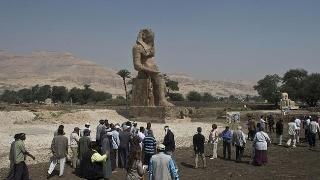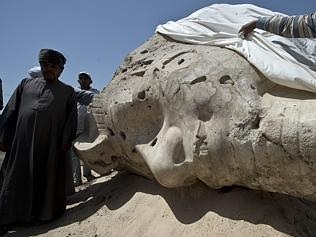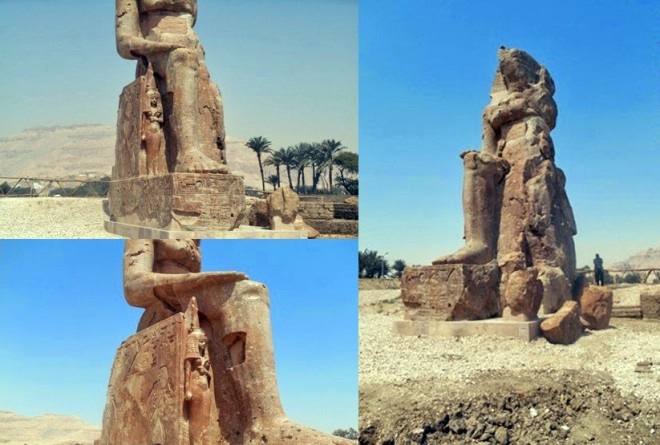It looks like you're using an Ad Blocker.
Please white-list or disable AboveTopSecret.com in your ad-blocking tool.
Thank you.
Some features of ATS will be disabled while you continue to use an ad-blocker.
15
share:
These statues are huge!


full article

source
They are beautiful, hope to travel to Egypt one day...

The two monoliths in red quartzite were raised at what European and Egyptian archaeologists said were their original sites in the funerary temple of the king, on the west bank of the Nile. The temple is already famous for its existing 3400-year-old Memnon colossi — twin statues of Amenhotep III whose reign archaeologists say marked the political and cultural zenith of ancient Egyptian civilisation.
The existing two statues, both showing the pharaoh seated, are known across the globe.

“The statues had lain in pieces for centuries in the fields, damaged by destructive forces of nature like earthquake, and later by irrigation water, salt, encroachment and vandalism,” she said, as behind her excavators and local villagers washed pieces of artefacts and statues unearthed over the past months.
full article

"The world until now knew two Memnon colossi, but from today it will know four colossi of Amenhotep III," Sourouzian told a press conference on Sunday unveiling the statues.
"Every ruin, every monument has its right to be treated decently. The idea is to stop the dismantling of monuments and keep them at their sites," she said, adding that steady "international funding" is essential for the preservation of world heritage sites.
source
They are beautiful, hope to travel to Egypt one day...
edit on 24-3-2014 by Jennyfrenzy because: add image, second source
edit
on 24-3-2014 by Jennyfrenzy because: changed title of thread from found to unveiled.
reply to post by Jennyfrenzy
Those statues are huge. The last picture really puts theor size in to perspective.
Beautiful work, can't imagine the time and energy it took to bulid those beauties back then.
One Love,
Lucinda
Those statues are huge. The last picture really puts theor size in to perspective.
Beautiful work, can't imagine the time and energy it took to bulid those beauties back then.
One Love,
Lucinda
new topics
-
Scary video of face in an abandoned house
Paranormal Studies: 1 hours ago -
Just Came Across These Unusual Old UFO Pics
Aliens and UFOs: 3 hours ago -
LA Mayor Bass Demanded $49M in Additional LAFD Cuts One Week Before Wildfires
Mainstream News: 5 hours ago -
Sepultura - Territory - With New Drummer Greyson Nekrutman
Music: 6 hours ago -
Carry On!
Short Stories: 6 hours ago
15
